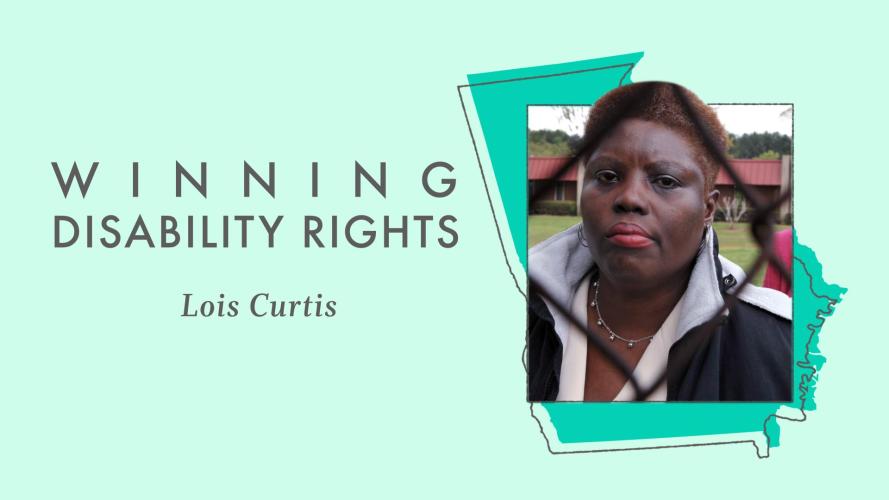
By Sara E. Cohen of Because of Her Story
Artist Lois Curtis and advocate Elaine Wilson were each housed in institutions and shelters. From ages 11 and 15, respectively, they were isolated from society due to cognitive and developmental disabilities. At the state-run Georgia Regional Hospital, doctors decided both women were ready to move to programs that would offer greater independence. But the state stopped the women from moving. Wilson said, “When I was in an institution, I didn't like myself. I was trapped…I had no hope. I thought, Oh God, Oh God. When am I ever going to leave here?"
Curtis and Wilson sued the state of Georgia. Attorney Sue Jamieson of the Atlanta Legal Aid Society led their case to the Supreme Court. The case was called Olmstead v. L.C., referencing Tommy Olmstead, Georgia’s commissioner of human services, and Lois Curtis. The case attracted attention from the media and activists. Jamieson remembered, “We were climbing the steps of the United States Supreme Court, moving through hundreds of persons with signs, many in wheelchairs, who had spent most of the previous night in a disability civil rights vigil.”
On June 22, 1999, Justice Ruth Bader Ginsburg announced the court’s decision in the case: the Georgia Department of Human Resources and Georgia Regional Hospital violated the 1990 American with Disabilities Act. The case declared that unjustified isolation due to disability was a form of discrimination. Wilson was placed with a caretaker and took public speaking training. She became an advocate. Curtis eventually moved into her own home and devoted time to her art. In 2011, Curtis met President Barack Obama and gifted him one of her original paintings, a self-portrait. Curtis, Wilson, and Jamieson’s work allowed many more people with disabilities to live independently.
Watch the video in Spanish. See the full video series about women who fought for change.